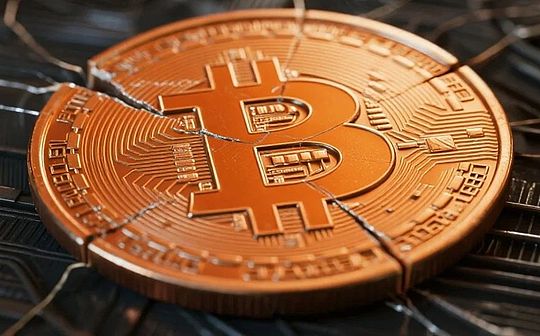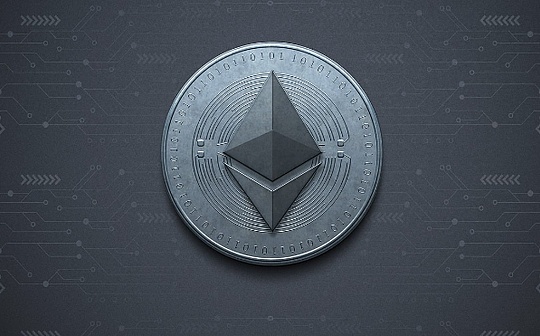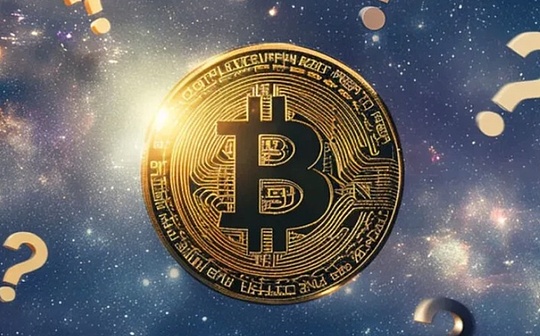
1 BTC = 114,233 USD (2025-08-04)
Let’s turn our time back to 2017 and review a thrilling “on-chain past”.
When the price of Bitcoin collapsed by 40% in July 2017, what made everyone even more uneasy wasA long-planned “civil war” is approaching the explosion point.
The mining pool giant holds 85% of the computing power of the entire network, threatening to split Bitcoin; the developers factions accusing each other of the “mutilation agreement”; the exchange urgently suspends charging and withdrawals, warning users“The received coins may disappear out of thin air”.
It is no exaggeration to say that Bitcoin was standing at a crossroads of life and death at that time.Transaction congestion has reached the brink of losing control: a simple transfer has to wait for several hours, and the handling fee has soared to dozens or even hundreds of dollars. Ordinary users are looking at the mountains of unconfirmed transactions on the blockchain browser, leaving only helplessness.
The entire crypto world is holding its breath.
What people are talking about is no longer “how much can Bitcoin rise”, but “After August 1, will the Bitcoin in our hands still be on the same chain?”—UASF (User Activation Soft Fork) Ultimatum is up to countdown, User nodes that support SegWit are tense with miners who stick to old rules. A chain split crisis that may tear Bitcoin is only a matter of confirmation of the last few blocks.
That’s since the birth of Bitcoin.The “Fate Button” pressed by “user” instead of “miner” for the first time.It is about who should define the rules of a decentralized network, about the technological beliefs and interests hidden behind the 1MB block limit, and more about whether this “young” monetary system can survive the most dangerous internal rupture.
How did this thrilling game happen?Are all Bitcoin users winning those stories hidden behind code, computing power and community shouting?Or did the miner who holds the computing power of the entire network win?I will tell you all this.
Previous life: The brewing of the storm (2015 – early 2017)
The so-called UASF isUser Activated Soft Fork, translated as: User Activated Soft Fork.andTo understand UASF and why it finally came to this point, you must first understand the core contradictions it needs to resolve:The Blocksize War.
1. The root of contradiction: 1MB shackle
In the early version of Bitcoin, Satoshi Nakamoto limited the size of a block to less than 1MB, with the original intention of preventing spam attacks from causing network paralysis.However, with the increase in Bitcoin users and transaction volume, this 1MB upper limit gradually becomes a bottleneck.
Main problems manifestations: transaction congestion and soaring handling fees.
During peak periods, a transaction may have to wait for hours or even days to be confirmed, and the handling fees are unacceptable, which conflicts with the original intention of Bitcoin’s “peer-to-peer electronic cash system”.
2. The formation and opposition of the two camps
The community is divided into two main camps around how to solve the problem of “on-chain congestion”.
Big Blockers:
Core Proposition: Directly and simply through hard fork to increase the block size upper limit, such as expanding to 2MB, 8MB or even larger.They believe that this is the most direct and effective way to expand capacity, which can keep the handling fee low and allow Bitcoin to compete with payment networks such as Visa.
The main supporters behind: Big miners and mining pools represented by Bitmain’s Wu Jihan and Antpool, as well as some early preachers such as Roger Ver and developer Gavin Andresen.They control most of the computing power of the Bitcoin network.
Small Blockers/Core:
Core Proposition: Maintain the 1MB base block size unchanged, or perform conservative and backward compatible upgrades.They believe that arbitrarily expanding a block through hard forks poses serious risks:
-
Centralized risk: Larger blocks mean higher costs (bandwidth, storage, computing) to run full nodes, which will cause only large enterprises to run full nodes, thus damaging the decentralized characteristics of Bitcoin.
-
Security Risk: Hard forks are an incompatible upgrade, and improper handling can cause permanent divisions of the community and chains.
Solution: They advocate more sophisticated technical solutions, such as Segregated Witness (SegWit), and expanding capacity on Layer 2, such as Lightning Network.
Key supporters: Most developers of Bitcoin Core (Bitcoin Core) such as Pieter Wuille, Gregory Maxwell, Luke Dashjr, etc.
3. Propose and deadlock of SegWit
At the end of 2015, Core developer Pieter Wuille proposedSegWit solution (BIP 141), BIP is the proposal of Bitcoin, and the number after it is the number.It can be said that SegWit technically almost perfectly solves the problem of Bitcoin congestion.
What SegWit does:
-
Fix Transaction Malleability: This is a long-standing bug that clears the barriers to the implementation of layer 2 protocols such as Lightning Network.
-
Disguised expansion: It separates the “witness” (signature) data in transactions from the main block, so that the main block can accommodate more transactions, the effect is equivalent to increasing the block size to about 1.7MB-2MB, and this is a soft fork with backward compatibility.
However, SegWit’s activation mechanism requires that within a certain difficulty adjustment cycle (about two weeks, 2016 blocks), 95% of miners express support by sending signals in blocks they mined (that is, the block version number is 0x20000000).
This extremely high threshold has led to an activation deadlock that lasted nearly a year.
The large blocks led by Bitmain have been delaying sending support signals.The reason is complicated. The public reason is that they prefer direct hard fork expansion, but the community generally speculates that it is also related to a patented mining optimization technology called ASICBoost (which is incompatible with some implementations of SegWit, which may cause miners to lose some of their mining advantages).
But after BIP141 launched the vote in March 2017, the approval rating was long below 30%.The core reason is that China’s large mining pools (such as AntPool and BTC.com, owned by Bitmain, controlled more than 70% of the world’s computing power at that time) were more inclined to hard fork expansion and had a negative attitude towards SegWit.
Miners are worried that SegWit will weaken the “ASIC-friendliness” of miner hardware, and that hard fork expansion is more in line with its short-term interests (larger blocks can package more transactions and earn more processing fees).
By June 2017, SegWit activation was nowhere to go, but trading congestion was getting worse.The community is gradually losing patience with the miner-led governance model, and the future of Bitcoin is at a deadlock at this moment, which seems to be a “unsolvable” situation.
This Life: The Day of UASF’s debut and decisive battle (Spring 2017 – August 1, 2017)
Faced with a protracted deadlock, some of the community felt desperate, believing that miners “kidnapping” the future of Bitcoin for their own benefit.At this time, a radical but fundamentalist solution was proposed.
1. The birth of UASF (BIP 148)
In February 2017, a developer with the pseudonym “shaolinfry” proposedBIP 148 Solution, i.e. UASF (user activates soft fork).
Core mechanism: This is an ultimatum issued by an “economic node” to miners.It stipulates that from August 1, 2017, all nodes running BIP 148 clients will begin to reject blocks that do not signal SegWit activation.
Game and risk: This is a high-risk game“Game of chicken” (game of chicken).
Additional explanation of the game logic of the coward game: essentially, it depends on who retreats first. The result you want to see most is the other party retreating, and the result you are most afraid of is that everyone “died together”.Both sides are trying to show each other’s determination to “I will never retreat” to force the other party to take the initiative to make concessions because they are afraid of the worst outcome.
If most miners compromise: start signaling support for SegWit by August 1, the Bitcoin network will transition smoothly and UASF will retire successfully.
If most miners refuse to compromise: Then on August 1, the Bitcoin blockchain will be split into two: one is the BIP 148 chain (only blocks that support SegWit), and the other is the old chain (Legacy Chain).This will lead to a split in Bitcoin, causing market chaos and huge loss of value.
The slogan of UASF is“My node, my rules” (I make the decision on my node), it emphasizes that the power of the Bitcoin network should ultimately belong to users running full nodes, not miners.This concept has been supported by a large number of community users and Core developers.
2. New York Agreement (NYA) and SegWit2x
Faced with the possible split risks brought by UASF, some large Bitcoin companies (including Coinbase, BitPay, etc.) and mining pools (accounting for more than 80% of the entire network’s computing power at that time) reached a compromise plan in May 2017, namely the New York Consensus (SegWit2x).
Solution content:
Step 1: Activate SegWit immediately, but implement it through a scheme called BIP 91, which reduces the activation threshold from 95% to 80%.
Step 2: Perform a hard fork within three months after SegWit activation (about November 2017), increase the base block size to 2MB.
This plan attempts to meet the needs of both factions at the same time.However, it has been strongly opposed by the Bitcoin Core development team, who believe this is not fully tested and community consensusMandatory hard forks are extremely dangerous and irresponsible.
3. Eve of the final battle: Locking of BIP 91
As August 1 approaches, the atmosphere is extremely tense.The market is worried that Bitcoin will split into three chains (Legacy, UASF/SegWit, SegWit2x).
To avoid UASF (BIP 148) forcibly triggering the split on August 1,Under tremendous pressure, miners began to accelerate their support for BIP 91 (the two evils are less powerful, and the two interests are more powerful).The purpose of BIP 91 is that once locked, it forces miners to signal that supports SegWit (BIP 141), otherwise the blocks they mine will be rejected by the network.
Major time node: On July 21, 2017, BIP 91 obtained sufficient computing power support and successfully locked.This means that the activation of SegWit is a foregone conclusion and the worst-case concerning UASF (BIP 148) – the split caused by miners’ non-cooperation – was successfully avoided.
4. The day of the decisive battle: August 1, 2017
On this day, Bitcoin enthusiasts around the world are watching with their breath.Two major events eventually happened:
Bitcoin (BTC) Avoid Split: Since BIP 91 has been locked, miners are sending SegWit signals in an orderly manner.UASF (BIP 148) ultimatum day passed smoothly, and the Bitcoin main chain did not split.
This is a great victory for the “user will”.
The birth of Bitcoin Cash (BCH): Some extreme block supporters who adhere to the large block route and do not accept SegWit at all (led by Bitmain’s ViaBTC mining pool) decided to perform a hard fork as planned.
They created a new cryptocurrency, Bitcoin Cash (BCH), on August 1.BCH removes SegWit and directly increases the block size to 8MB.All users who hold BTC at the fork time have obtained BCH at a ratio of 1:1.
The impact of the future: the opening of a new pattern
The story of August 1, 2017 did not end there, it profoundly changed the development trajectory of Bitcoin.
1. The failure of SegWit final activation and SegWit2x
On August 24, 2017, SegWit was officially activated on the Bitcoin main network, paving the way for subsequent developments such as Lightning Network.
However, the threat of the second part of the New York consensus, the 2MB hard fork, remains.But over the next few months, SegWit2x’s support rate continued to decline due to the firm resistance of Core developers and the community, and the lack of reliable replay protection mechanisms, and finally on November 8, 2017, its main promoters announced the cancellation of the hard fork.
This is seen as the ultimate victory for the small block/Core pie.
2. The impact on the subsequent development of Bitcoin
Consolidated Core’s development roadmap: The victory of this “civil war” established Bitcoin’s long-term development path with “decentralization” and “security” as the highest priority, cautiously treats underlying protocol modifications, and vigorously develops second-tier solutions (such as Lightning Network).
Prove the power of “user sovereignty”: Although UASF was not finally executed, its existence itself is like a “Sword of Damocles”, successfully forcing miners and enterprises to compromise, proving that in the Bitcoin network,The power of consensus between economic nodes and users cannot be ignored, This greatly enhances the community’s confidence in the decentralized characteristics of the network.
Created a precedent for peaceful fork: The birth of BCH, although the process is controversial, also demonstrates that “peaceful breakup” through hard fork is a possible way out when there is an irreconcilable contradiction in the community.This provides an example for various fork coins later.
Clarify the value narrative of BTC: After this struggle, the narrative of Bitcoin (BTC) “Digital Gold” and Store of Value (Store) has become clearer and mainstream.The narrative of pursuing “cheap payment” has largely shifted to BCH and other competitive chains.
Accelerate the development of the Lightning Network: The activation of SegWit is the premise for the large-scale application of Lightning Network. The end of this struggle has greatly promoted the research and development and deployment of Lightning Network, opening the door to Bitcoin’s off-chain expansion.
The story of Bitcoin has never stopped the rise and fall of the price curve.
It is a long experiment of a group of idealists against “defined by a few people” – there are quarrels, compromises, and interests in the experiment, but there is always an immortal light: I believe that people can create a fairer and more transparent way of value transmission based on consensus and rules only based on consensus and rules.
Today, the Lightning Network is circulating among the global nodes, and the number of full nodes is still quietly growing. The thrilling summer of 2017 has long precipitated into the resilience in the Bitcoin gene.There may be new differences and new games in the future, but as long as there are still people who remember the morning without division on August 1,Remember the weight behind the four words “user sovereignty”, This experiment on decentralization will continue to move forward in the starlight of idealism.
It is not a victory for one side, but a rift that has been stitched with millions of nodes, developers, and users with beliefs.Those screens that were lit up late at night, machines that were hesitant in the mines, and codes that were tense on the exchanges together held the foundation of decentralization.
Now every transaction on the chain is the mark left by the “unification” and the echoes related to the “life and death”.
What Bitcoin’s most precious is never the price figure, but the ideal of “more unity” in differences – just like a community, in quarrels and compromises, it slowly becomes what it originally believed.
May you travel through the bull and bear cycle and be a teenager who returns to the coin hoarding.







